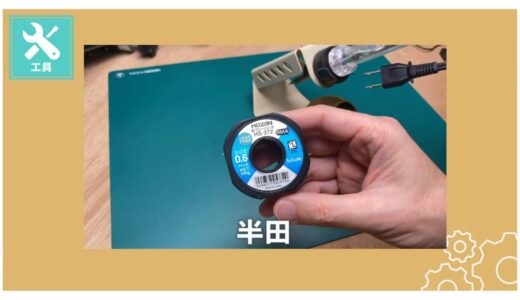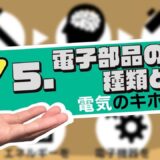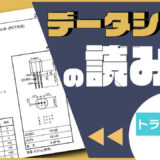コンテンツ
YouTube
0:17 PC
1:00 Electronic Components
1:55 Tools
3:21 Experimental Equipment
3:48 Goods that are useful to have
5:03 Summary
Electronic construction goods that beginners should prepare first


Therefore, in this issue, we would like to introduce four categories of specific goods that beginners should prepare under the theme of "electronic construction goods that beginners should prepare first.
If you are not sure what to buy in the end, please refer to this article.
personal computer
The first thing you need is a computer.
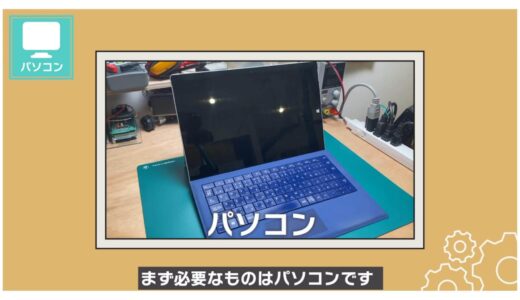
In electronics, programming is done on what is called a CPU or microcontroller, often using a personal computer.
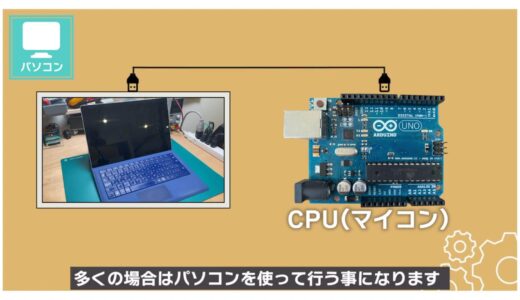
However, there is no need for particularly high specs, and a 10-year-old computer would be perfectly fine.
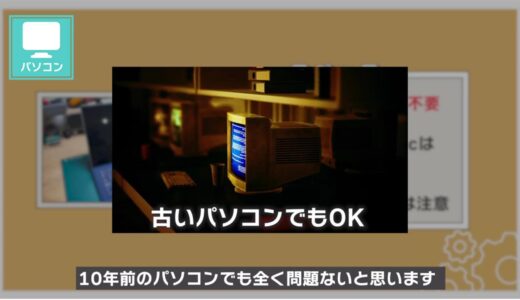
Also, programming software is available for various operating systems these days, so if you are just starting out in electronics, I think either Windows or Mac is fine.
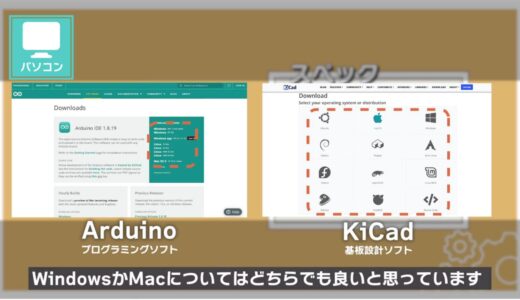
Note, however, that an older OS may not allow installation.
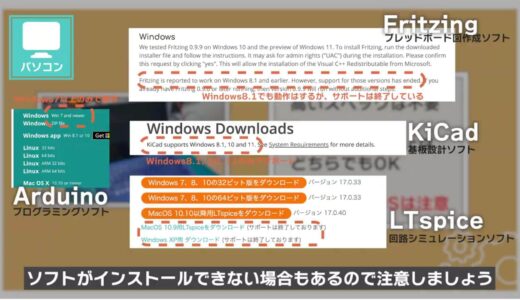
If you are unable to prepare a computer, you can use Sony's MESH device or obniz, a microcontroller board specialized for the IoT, to do simple electronics work from your smartphone.
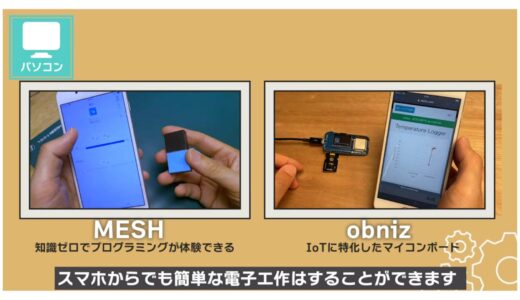
electronic parts (components)
The next thing you need is parts.
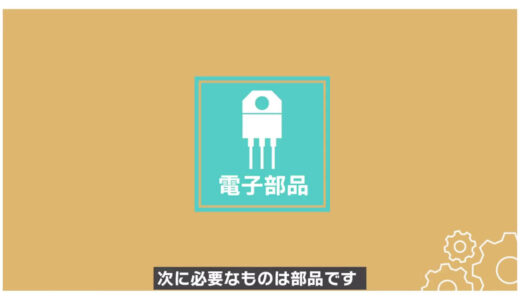
As explained in this video, electronic devices are made up of a flow of inputs, calculations, and outputs, each of which requires a corresponding component.
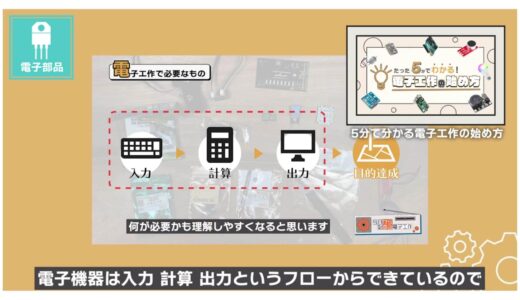
Components for calculations are called CPUs or microcomputers, and are generally called "microcomputer boards," which are one-packaged with useful functions for electronic construction.
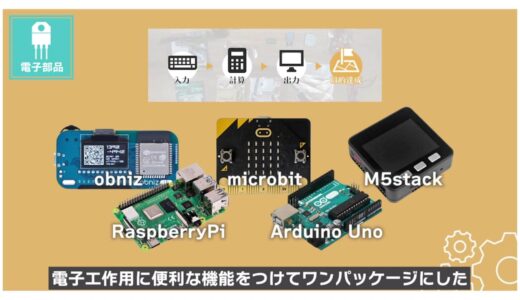
If you want to buy your first electronic device, you should definitely buy an Arduino microcontroller board.
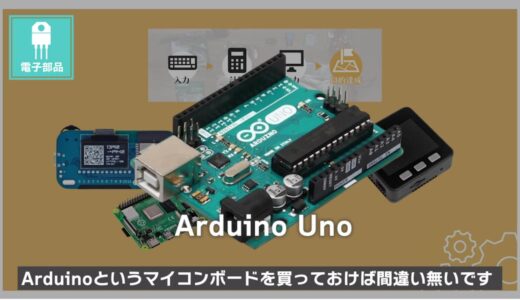
There are an infinite variety of input and output components, and they vary greatly depending on what you want to do.
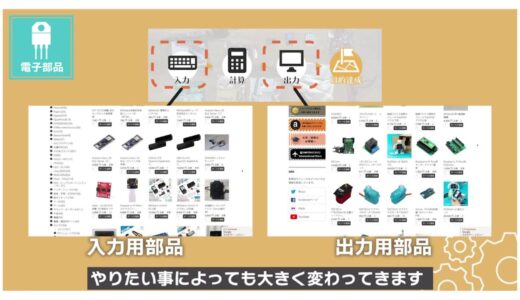
If you don't yet have a clear idea of what you want to make, for now, buy a beginner's kit from a manufacturer like ELEGOO or OSOYOO sold on Amazon.
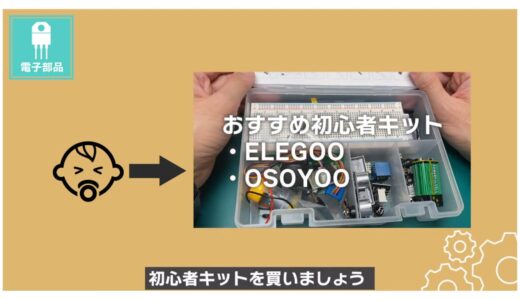
The microcontroller boards included in these kits are the manufacturer's own, but the microcontrollers and interfaces are the same as those of Arduino, so there is no need to worry too much about them.

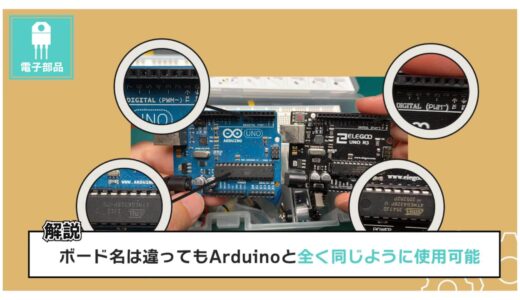
tool
The next thing you need is tools.
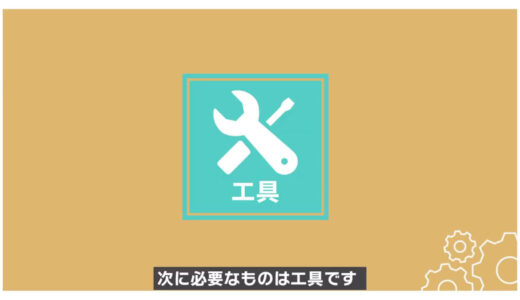
The first tools you will need to have on hand are a breadboard, nippers, tweezers, wire strippers, and radio pliers.
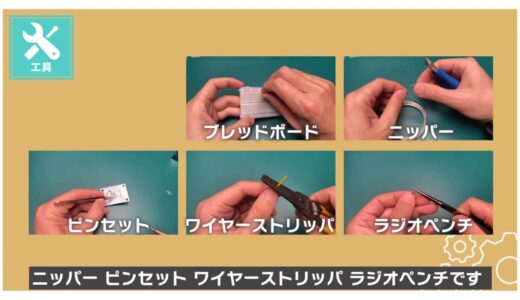
These are used to cut cables to the proper length, connect cables together, and grab small parts.
Since electronic work involves a lot of detailed work, these specialized tools make it outstandingly easy and stress-free to work with.

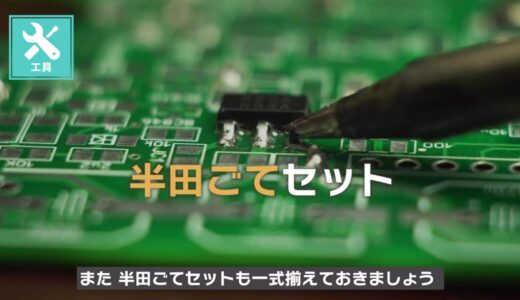
The soldering iron set referred to here consists of a soldering iron, solder, an iron stand, and a desoldering wire.
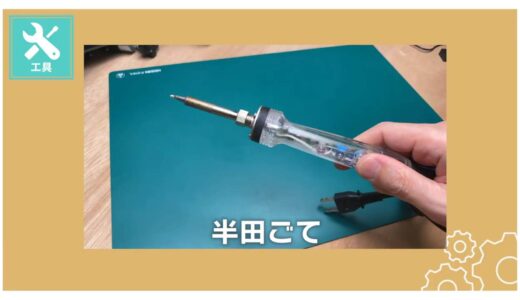 |
|
 | 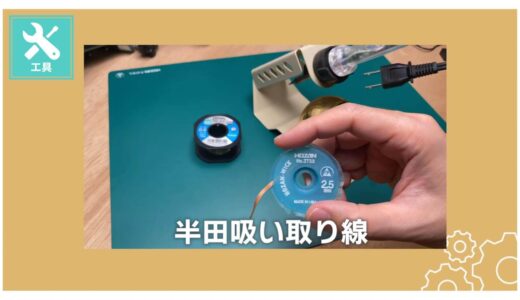 |
Since the suitable temperature varies depending on what is to be soldered, we recommend a soldering iron, preferably of the sound-regulated type.
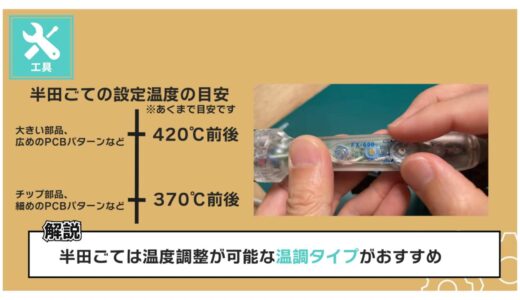
Solder should be environmentally friendly lead-free solder, and buy an iron holder with as solid a base as possible.
 | 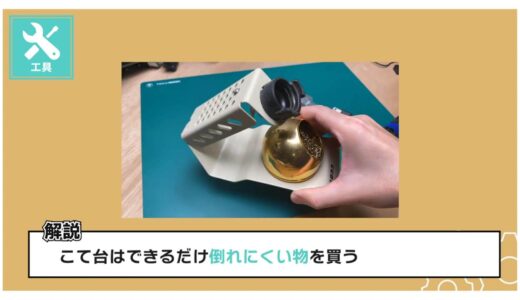 |

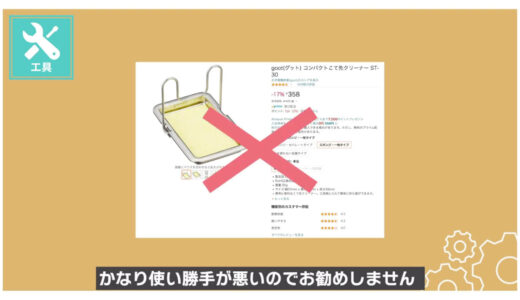
Also, along with the electronic components, you will want to have a case to store the components.
Since many of the parts are small, and moreover, it is often difficult to tell what they are at a quick glance, it is advisable to buy a case and sort them out as soon as possible before it is too late.


You can buy 100s of them, or you can go to a larger home improvement center and choose from dozens of different types.

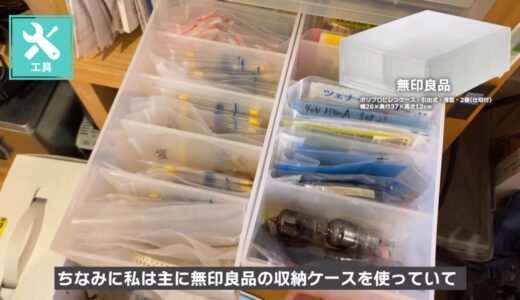
experimental equipment
Lastly, we present the experimental equipment.
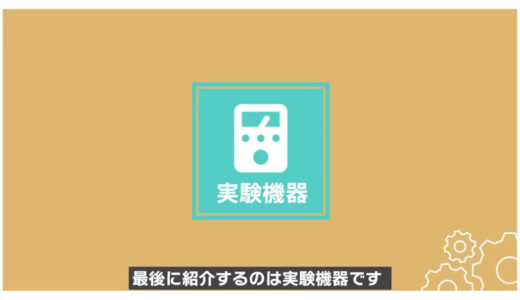
This is the most expensive part if you get particular about it, but for the time being, I think it is okay if you just need a tester.
A single tester measures voltage, current, resistance, etc., and is a reliable and useful tool in many areas of electronic construction.
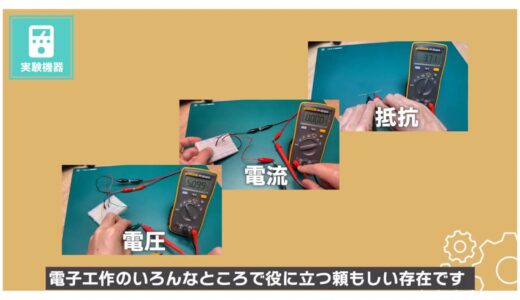
For as little as 3,000 yen, you can choose from a number of different types.
I will show you how to use the tester in another video.
Useful Goods
Finally, as an added bonus, here are a few things that are not essential but are useful to have.
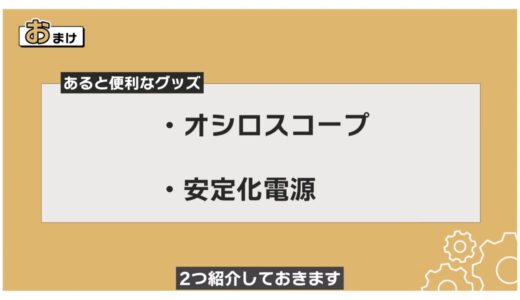
First is an oscilloscope.
An oscilloscope is a measuring instrument that can monitor voltages in real time.
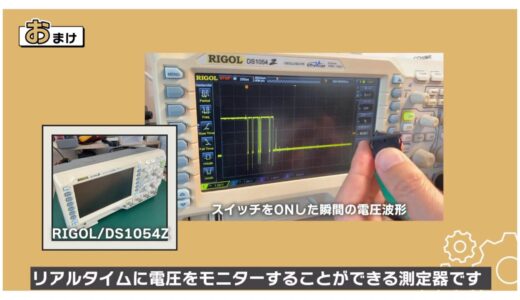
Although voltage can be viewed with a tester, the tester only displays time-averaged values, so voltage changes that are short in time cannot be seen.
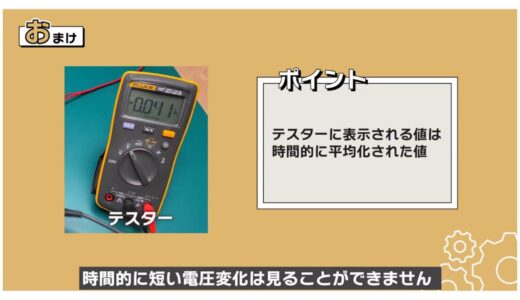
For example, if you emit a 1 kHz pulse at 3.3 V from 0, the tester will average out to 1.65 V. With an oscilloscope, you can check the waveform.
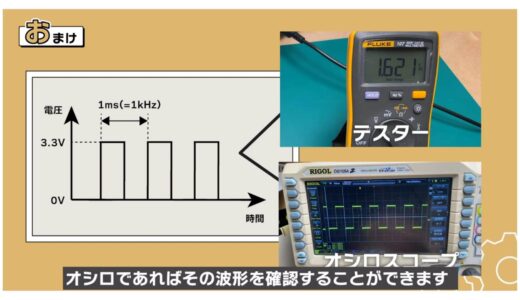
They cost several tens of thousands of yen at the cheapest, but they are quite useful in verifying the operation.
The next useful item is a stabilized power supply.
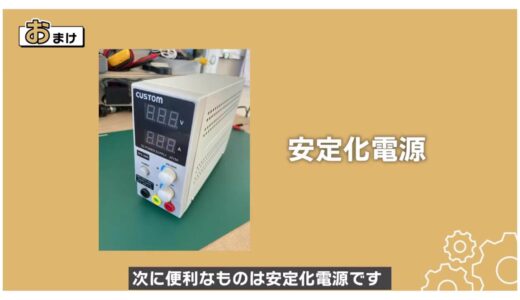
When you are working with electronics, you may want to do a little experiment such as running a motor or seeing how the brightness of an LED changes depending on the voltage.
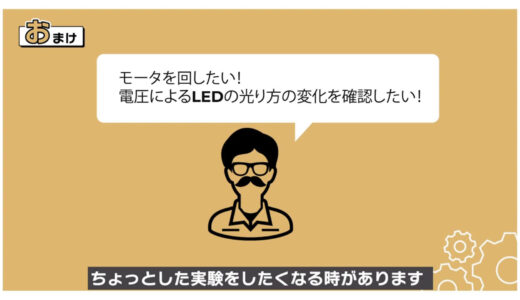
Microcontroller boards have output pins that can supply power externally, but these are fixed voltages such as 5 V or 3.3 V, and the amount of current that can flow is quite small, making them unsuitable for such applications.
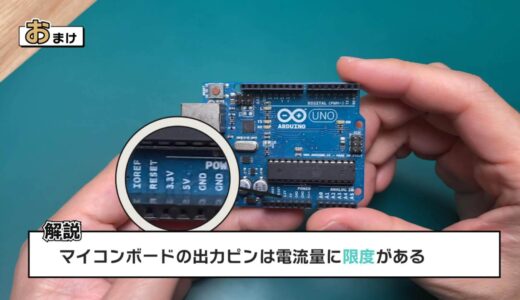
In such cases, a stabilized power supply is also quite useful because it allows the voltage to be changed freely and a large current to flow.
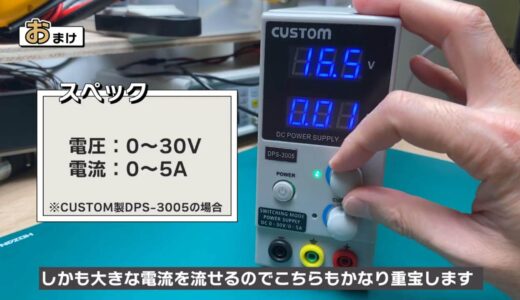
summary
In this issue, we have introduced the goods that you should have in order to get started with electronic construction.
Of course, what you need will vary depending on what you want to make, but for the time being, be sure to have the items introduced here, as they are used in any situation.
Please refer to the table below for a summary of each model and where to purchase them.
>>Click here for a summary table.
Two patterns are available, one for those who are cost-conscious and the other for those who are particular about their products.

 Start electronics
Start electronics 
